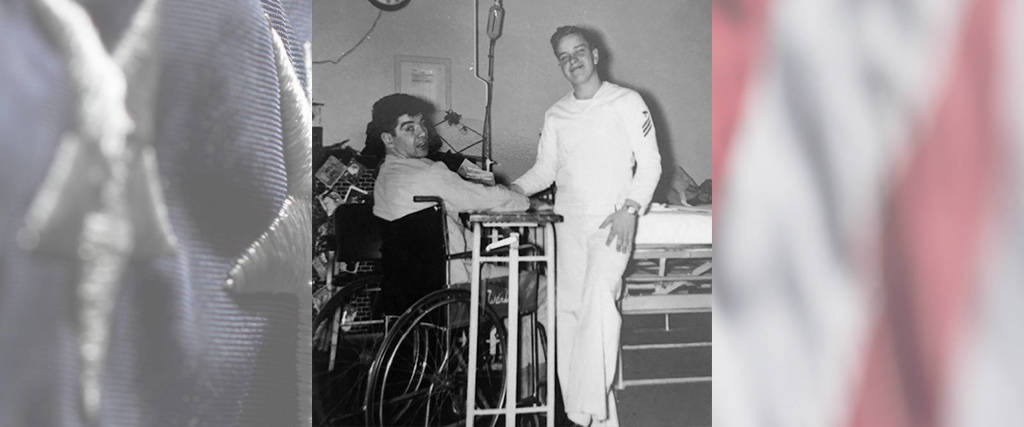U.S. Navy Korean War Wheaton/Arlington Heights, IL Flight date: May, 2019
By Charlie Souhrada, Honor Flight Chicago Veteran Interviews Volunteer
When he was in the Navy, Ken Shoberg got teased for looking so young, but four years of service during the Korean War turned him into a man. “I enjoyed being in the Navy,” he says. “That’s where I really grew up.” Ken was born August 16, 1932, to James and Florence Shoberg, joining sister Dorothy and brother David. Even though his father found steady work as a carpenter throughout Chicago, he remembers family finances were tight as the country continued to climb out of the Great Depression. Nevertheless, he enjoyed a happy childhood growing up on the northwest side of the city in a typical Chicago two-flat.
After graduating from Schurz High School in June, 1951, he tried college. That didn’t work out, so he “dodged the draft” by joining the Navy in February, 1952. “I remember raising my hand for four years and thinking ‘what did I just do?’ I was rather naïve,” he says.
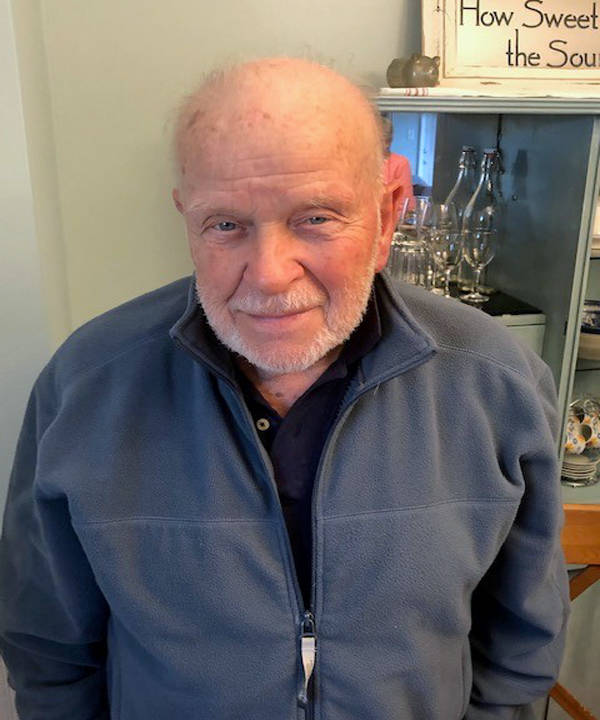
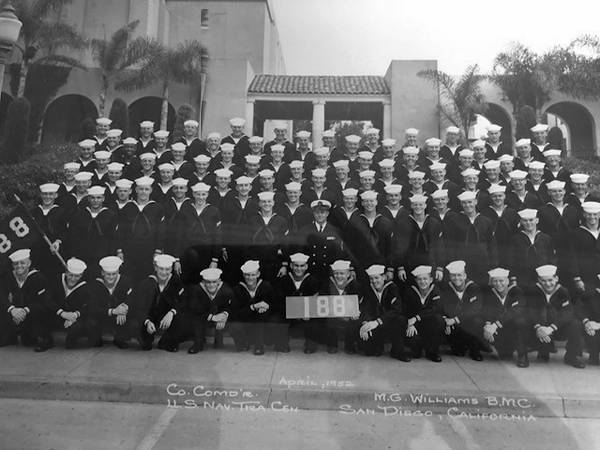
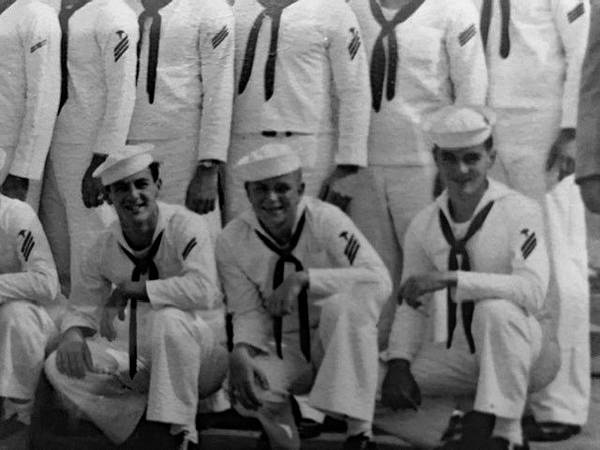
Boot camp at Naval Station San Diego was kind of rough but Ken met people from all backgrounds. About his mess hall duty, Ken recalls “We thought it was going to be great but quickly found it was a real drag. That’s because once you were done cleaning up breakfast you had to turn around quickly and get ready for lunch.” A never-ending series of “fire watches” and inspections also left an impression on young Ken. “We were always watching for something,” he says. “Then there were the seabag inspections … I found out there were thousands of ways you could mess up on a seabag!” He remembers learning to tie up his clothes a certain way and laying his toiletries out exactly as required. “One time, I placed my toothpaste where my shaving cream should have been and was ordered to brush my teeth with shaving cream!”
After boot camp, Ken was a newly minted seaman third class assigned to the aircraft carrier USS Antietam (CVA-36) and became part of U.S. Navy history. That year, the Antietam was reconfigured into the country’s first angled or “canted” deck aircraft carrier according to the current ship’s website. Ken explains the innovation improved flight deck safety and reduced the potential for crashes, a change made necessary with the introduction of jet aircraft in U.S. Naval operations.
On the Antietam, Ken was part of a skeleton crew that helped pilot the carrier through the Panama Canal Zone up to Bayonne, New Jersey. During the journey, he remembers spending countless hours polishing the floors with emery cloths in preparation for painting. “It was hot, dirty work,” he says. “We had to sand and sand, then sweep, then paint. Many times, we would stop sanding for the night then come back the next morning and have to re-sand everything. I’m no genius, but I thought if we stayed late, we’d at least get it done! Eventually, I understood why they kept doing that to us: to teach us to follow orders and keep us busy!”
On the East Coast, the Antietam’s crew was going to switch to another aircraft carrier, the USS Shangri-La (CVA-38), which was headed to get reconfigured with its own, angled deck. Rather than switch to the Shangri-La, Ken successfully arranged to stay onboard the Antietam. The ship traveled throughout the East Coast and the Caribbean picking up pilots for testing and training on the new angled deck. The Antietam was stationed at the Brooklyn Navy Yard for several months, and while there, Ken ran into a sailor who could talk himself into trouble. “I don’t remember his first name,” he admits, “but he went by the name ‘De Groot’ and he knew I was ready for a change. He said to me, ‘Shoberg, we’re going to get off this deck force!’” Thanks to De Groot’s influence, De Groot, Ken and another seaman all found their way, one-by-one, to Corps School, where, much to their delight, they slept in real sheets, not hammocks!
After completing Corps School, Ken was assigned to the Portsmouth Naval Hospital in Portsmouth, Virginia. He served as Corpsman for the next two and a half years, assigned to the neurosurgery ward. It was there that he learned a lot about life and the strength of the human condition. “Our main doctor was one of the best neurosurgeons at the time. He told us to have empathy, not sympathy. It amazed me how you can put responsibility on someone and they can do things they never believed possible.” Ken explains at Corps School, they learned the basics, but the team in Portsmouth taught them how to do things that went beyond their basic training and perform tasks out of necessity. “Years later, I would tell nurses what our team did, and they would be astounded. I was just a simple Corpsman, but we were a team and we learned how to do things together.”
In February of 1955, Ken was assigned to serve as a Marine Corpsman in Korea and then Japan, spending six-months at each location. He explains the war was over, but living conditions were still rather primitive and supplies were limited. The severely injured patients they encountered were always shipped to the U.S. Naval Hospital in Yokosuka, Japan, for more intensive care. After spending one year overseas, Ken was sent back to Treasure Island in San Francisco Bay where he was discharged in February, 1956.
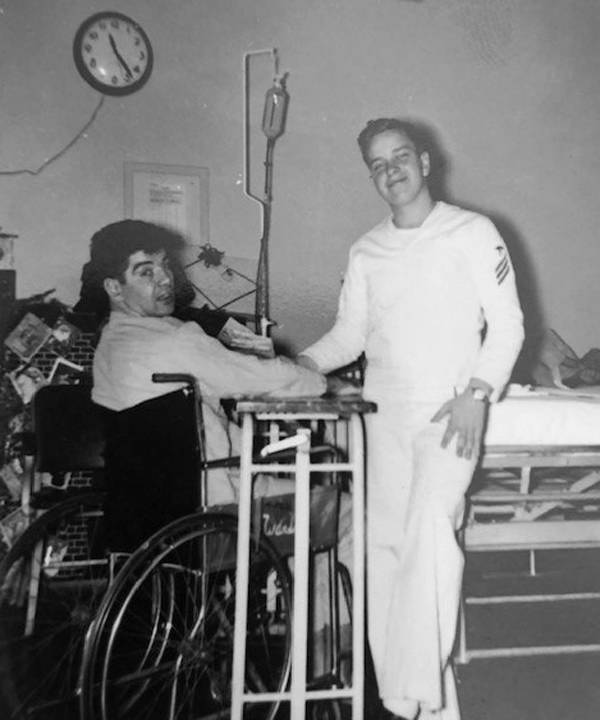
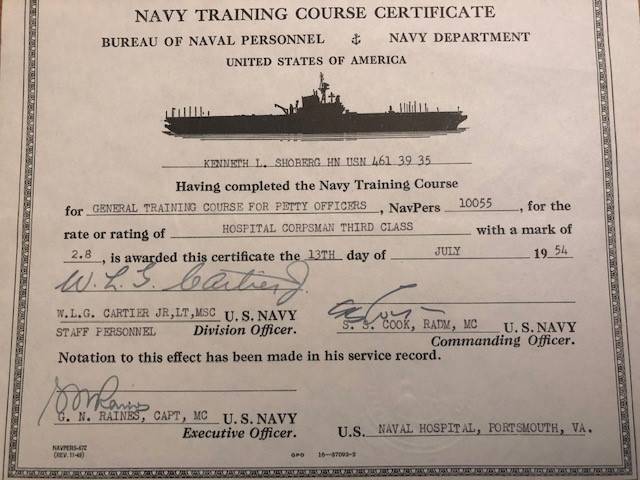
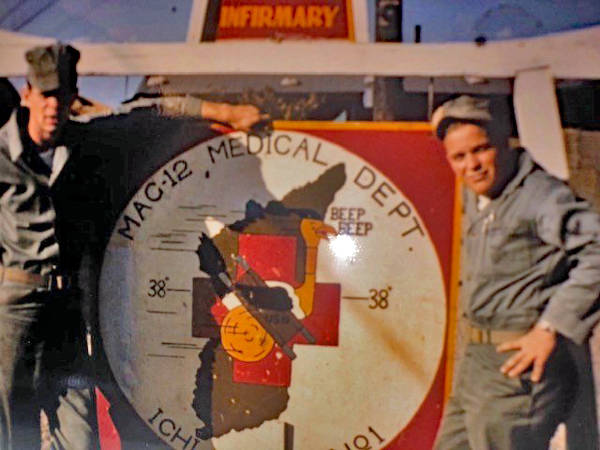
His trip back home included a 39-hour train trip to Chicago so he had time to begin figuring out what to do next. “Four years is a long time. After I got out of the service, all the friends that I knew were gone and there was a change in my life,” he remembers. He decided to follow a familiar path and became a carpenter, just like his father had before him.
Along the way, he met his future wife, Caroline, who was working as a nurse, ironically. She remembers thinking, “There’s this good-looking guy all alone … what’s wrong with the girls around here?” Ken eventually invited her out for coffee and they clicked. They married in 1960 and raised three children: Lisajoy, Jim and Ruthie in Arlington Heights. Today, Ken and Caroline live in Wheaton with their son, Jim. They enjoy spending time with family and helping their son conduct missionary work. Although his days as a Corpsman are long behind him, Ken is still caring for other people and proving that he’s more than just a simple Corpsman.



